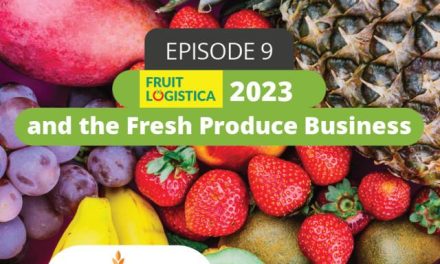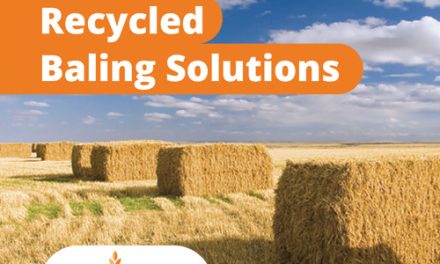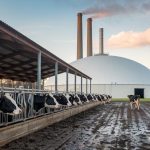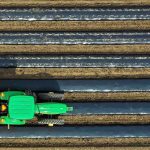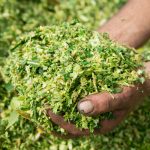
Cherry production: how to increase your productivity and a success story in Chile


This time, we will talk about cherry production and the benefits of using high tunnels to increase their productivity, boost crop quality levels and reduce their water consumption and we’ll get into detail regarding a study carried out in Chile, whose production has experienced outstanding growth in recent years.
Using different types of covers, especially when it comes to plastic films, it is one of the best options that agriculture producers have to optimize most of their crops. Agricultural plastics allow to increase production levels, and they are also quite helpful when you want to create the ideal scenario to perform the planting and harvesting work throughout the year, without having to rely on a specific season. To learn a little more about this topic, we recommend reading our eBook about cultivating fruit trees and using plastics to increase production.
A success story in terms of cherry production in Chile
Regarding cherry production, Chile has paid special attention to several protection methods that can be implemented to preserve the production levels and the quality of the fruit. One of them is the protected crop system, which has been used for some decades around the world, mostly with vegetable crops and which is already being applied in others fruit varieties such as strawberries, bananas, peaches, blueberries and cherries.
Chile has stood out as a producer and exporter of high-quality sweet cherries, so we want to carefully examine this case to discuss what methods they have used and how to adapt them to the American and Canadian market.
When it comes to cherries, they have put in practice the model of high tunnels based on the premise of allowing natural heat from sunlight and passive ventilation, with an irrigation system that can be performed through dripping, manual work or using sprinklers.
By using high tunnels in cherry production, the risk of crops and fruits being affected by frost or the fertilizing problems during critical periods, such as flowering and fruit setting, are greatly reduced. The temperature factor should be considered, since there is a variation of two or three degrees between the inside and outside of the tunnel.
Being able to protect crops with the use of plastic covers certainly has implicit economic costs, but it is important to analyse the benefits associated with this practice, which can be translated later into a significant savings for your crops, avoiding losses from climatic conditions and using the competitive advantages of the market by being able to speed up harvest times. Farmers in the Pacific Northwest area should consider these key aspects since rains and the effects of climate change have affected their last harvests.
Study on cherry production conducted in the Central Valley of Chile
It is worth mentioning that the Central Valley of Chile is the area with the highest production of sweet cherries in the country, which has experienced a remarkable growth in its production in recent years. Therefore, Marlene Ayala, a researcher specialized in fruit trees, decided to perform 2 studies on the crops of the region that are reviewed in the journal Good Fruit Grower:
- Crop results under high tunnels vs. uncovered crops
- Crop results under high tunnels, tents with three-wire systems and uncovered crops
Regarding the first study, Ayala’s conclusions where the following:
- Thanks to the temperature generated under the high tunnels, fruit trees flourished 5 days before the uncovered ones and their harvest date came was 8 days earlier, which implies competitive advantages to enter the market in advance.
- During the rains, the water content of the soil of the crops under tunnels was more stable and thus the soil cracked less than outdoor crops.
- Trees grown under high tunnels exhibit more growth than uncovered ones and their fruit was softer and with less soluble sugar content.
In the second study, Ayala focused on the orchards of the cherry variety called Santina. The results were as follows:
- The cherries grown under high tunnels were harvested 10 days in advance and those under tents with three-wire systems 5 days in advance.
- The fruits were larger in crops under high tunnels, and also softer, especially those collected at the top of the trees.
Considerations to grow under cover
It is necessary to understand that before making the decision to have crops protected, either under temporary roofs or high tunnels, producers must carefully study the geographical characteristics and climatic conditions of the orchard, as well as the needs of the species to be grown to determine the most appropriate method to be used.
Roof covers are designed to cover the top of the trees, leaving an opening between rows to improve air circulation. Choosing the plastic to be used in them will depend on the light transmission capacity, as decreasing light intensity can cause cherry plants to lose their production or fall into a vegetative state. Currently, there is cherry production under this modality in some areas of Chile and at the south of the O’Higgins Region.
If you need advice on what type of plastic to choose to cover your crop, you can consult with any of our experts on the subject.
On the other hand, high tunnels, also known as macro-tunnels, were designed for intensive crops, since they help extend the production period and increase accumulated yield by 15 or 20 percent. There are many varieties of high tunnels: mobile, fixed, manually retractable or machined, with automatic ventilation, refreshing or heated. At least in Chile there are some of the most basic options such as fixed, mobiles and others with manual openings.
Benefits of using high tunnels in cherry production
Several benefits come from using high tunnels for cherry production, among which are the following:
- They offer protection in the face of climate changes, whether from frost, excessive rain, very intense sunlight, very cold or very hot winds and hail.
- They protect crops from external agents, such as birds that want to eat the fruits, undesirable pests, animals and insects.
- They help speed up the times, allowing the harvest to be obtained much earlier than expected to meet the demands of the market and have a competitive advantage.
- Production is increased and fruit quality is optimized.
- The demand for water is reduced up to 20% compared to uncovered crops, according to studies made by the researcher Ayala.
Nowadays, more farmers are inclined to use high tunnels in cherry production, because aside from expanding productive areas, advancing or delaying growing cycles, increasing production levels and improving the quality of the fruit obtained, it is possible to expand and improve the period of supply of the fruit, and this in turn translates into offers and better prices since producers are able to meet the demand on periods when this fruit is usually not easily found.
Another important aspect is that the use of high tunnels generates a microclimate within the cultivation of cherries that allows to minimize the presence of pests and diseases that can compromise the integrity of the crops. Regarding this subject, we invite you to read our post about weed management in crops.
Additional benefits can be obtained from the use of retractable tunnels in cherry orchards. For example, when the spring season arrives, it is important to close them to avoid frost damage, later they must be reopened for ventilation and then closed again if necessary. When the harvest period is close and the tunnel opens, the perspiration that could end up leading to weight loss is prevented.
The use of high tunnels in cherry production is a widespread solution to reduce the splitting of the fruits generated by rain, which is one of the main threats that concerns of farmers.
The numbers speak for themselves
Certainly, the cultivation of cherries in Chile is an example of what can be achieved when you use innovative, timely, and effective strategies not only to obtain the expected results but also to go further and exceed expectations.
According to Juan García, Product Manager of the Greenhouse Cover Division of Armando Alvarez Group, in the specific case of Chile, the success of the cultivation of cherries under plastic covers is something tangible and worthy of recognition. According to information provided in October 2019 by the Chilean Cherry Committee, the 2019-2020 season was expected to produce historical figures in terms of export levels and, despite the negative effects of Covid-19, the forecasts were met.
In recent years, approximately 90% of the experts in cherry cultivation in Chile had Asia as one of the preferred destinations to export, and almost all the production went to China achieving excellent results. Perhaps the key to their success was to have a sense of opportunity, as the crucial point was to put quality cherries in China, particularly as the Chinese New Year was approaching, a special occasion to be seized.
But how do you get quality and increase cherry production levels? Definitely, plastic covers play a determining role since they allow to create the ideal conditions for the crop to thrive. However, you must have availability and willingness to make a significant investment, which in the long term can only bring benefits.
Regarding the use of plastics in cherry fields, García explains that to cover one acre of plantation it would be necessary to invest approximately $12,500, using some of the simplest structures available in the market, while still being appropriate for this type of crop.
In the following table you can see how the numbers speak for themselves:
| Material | USD/ACRE EXW | USD/HECTARE EXW | CONTAINERS |
| STRUCTURE | 9,500 | 23,000 | 3×40’ + 1×20’ |
| COVER | 3,000 | 7,500 | 1×20’ |
| TOTAL | 12,500 | 30,500 | 3×40’ + 2×20’ |
So, for example, “with a standard harvest of 22,000 lbs / acre and an average sale price of 1,15 $/lbs (2.50 $ / Kg). If we lose 40% of the harvest, i.e. 10,000 $, due to rain, hail or cold, the initial investment in a permanent structure with plastic covers is almost repaid in one year.
It is not uncommon that every year a certain % of crop is lost to adverse climate conditions. The protective structures would eliminate those losses to insignificant figures.
Although the investment in a plastic structure can be important on larger farms, it pays for itself in one year, which is sooner than you might think compared with other farm investments in machinery, irrigation systems or storage/handling. Garcia also explains that when it comes to covering acres in Chile, the cost in dollars per pound can be even a little higher compared to other regions of the world.
“In Chile, the average prices are more expensive than 1.15 dollars per pound, instead they are normally around 1.80 to 2.75 dollars per pound, an approximate of 6 euros per kilo. These are average prices that have been obtained by export farmers in recent years, but I wanted to give an example by lowering the average price to demonstrate the benefit of covering other markets, where the average selling price is lower than this type of situation. Losing a large percentage of the harvest is usually common, it is not an exceptional case,” according to Garcia.
For further information, we recommend reading our article about frequently asked questions about fruit tree covers.


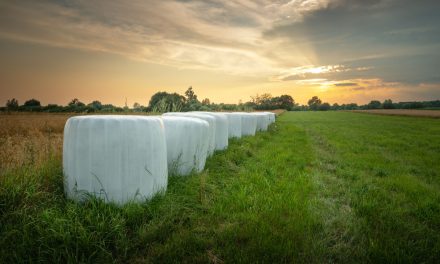
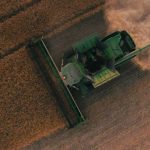

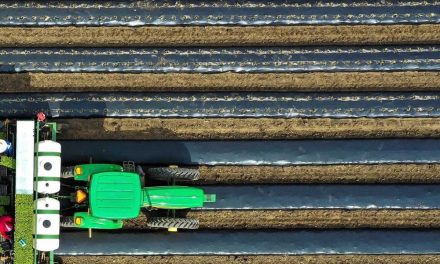



![[eBook Trends in Agriculture Plastics] Increasing use of biodegradable mulch](https://agriplasticscommunity.com/wp-content/uploads/550 × 310_2_ENG-440x264.png)
![[eBook Trends in Agriculture Plastics] Reducing the plastic used in the manufacture of agricultural films](https://agriplasticscommunity.com/wp-content/uploads/550 × 310_1_ENG-440x264.png)






